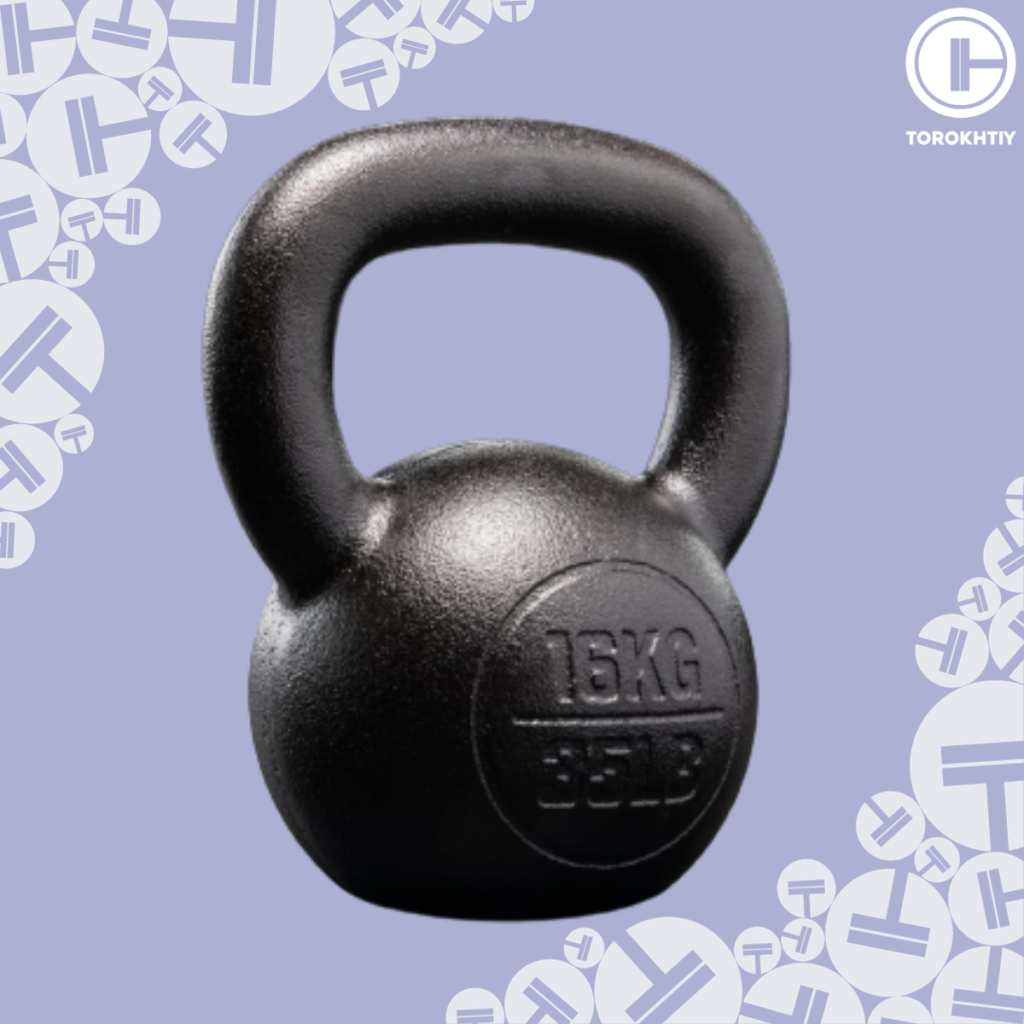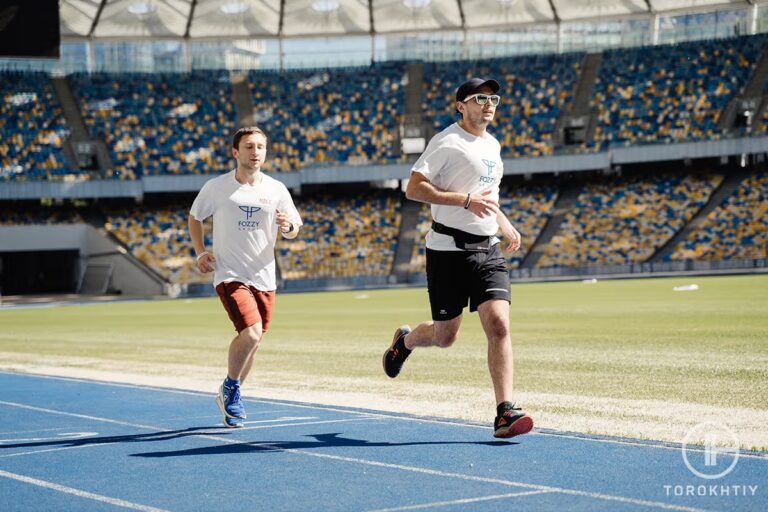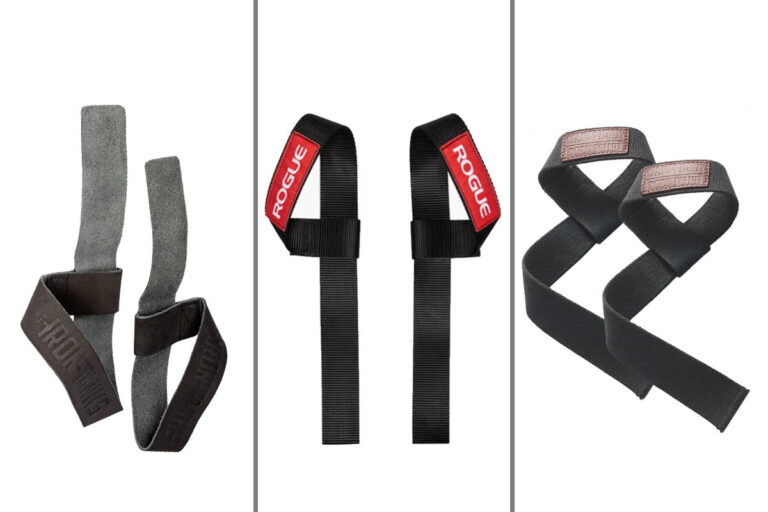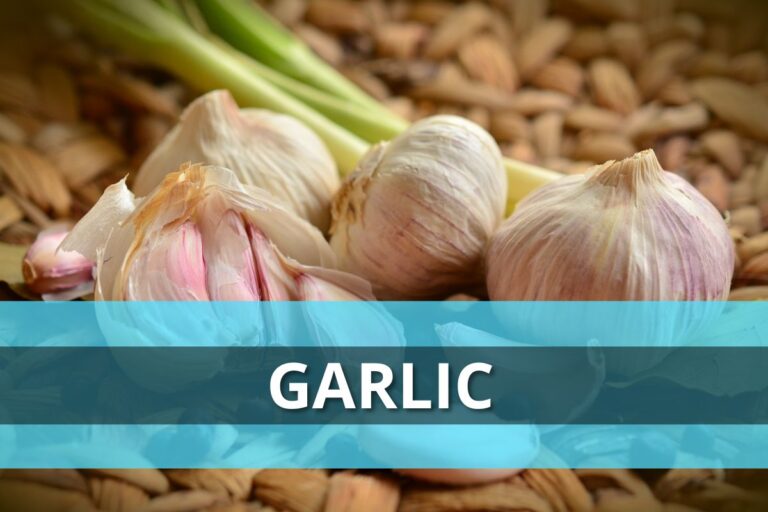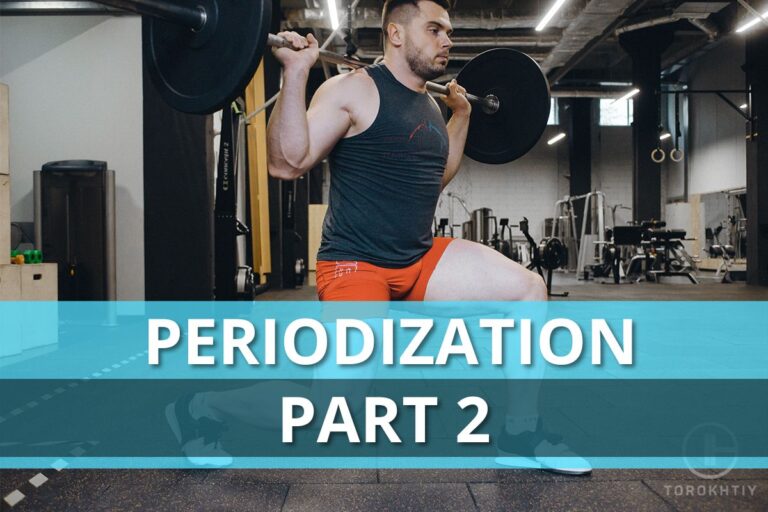Kettlebell Core Workout: 8 Best Exercises Explained
Everybody needs a strong, functional core. Not only does it look amazing, but without a strong core your health, posture and stability will suffer. The kettlebell core workout is a fantastic way to strengthen your core and tone your muscles.
The kettlebell is one of the most versatile pieces of gym equipment you’ll come across and the core workout it provides is a unique way to target those obliques, lower back and abdominal muscles that can be hard to reach.
In this article, we’ll take a closer look at what kinds of workouts you can do with the kettlebell to work your core and we’ll also go over the benefits core workouts that include the kettlebell have. If you’re not familiar with kettlebells or working out in general – that’s fine. These workouts are fabulous for all fitness levels.
Let’s get right into it!
What is a kettlebell core workout? It’s a fitness routine that uses the kettlebell to target and strengthen the core – obliques, abs, and lower back. It involves dynamic workouts to improve core stability, balance, and overall strength.
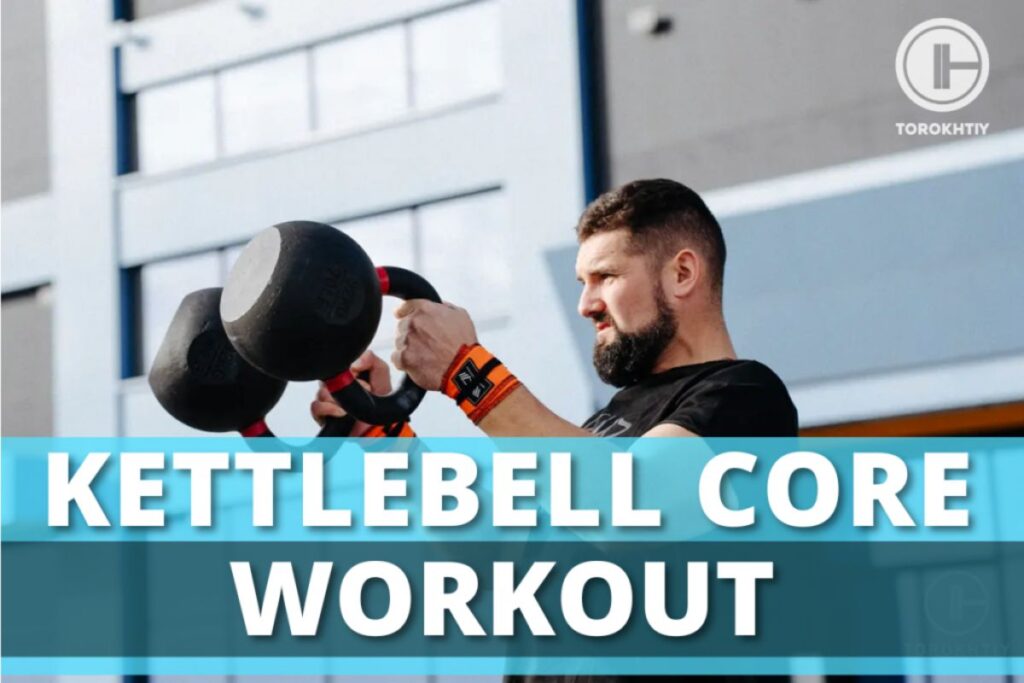
Is Kettlebell Workout Good for Your Core and Abs? 7 Benefits
No, it’s not good – it’s amazing! And that’s not an overstatement. The kettlebell may look like an awkward cannonball and if you don’t have a lot of experience with it, you probably think it can’t do that much.
That’s not the case, though. Kettlebells are super popular and rightfully so. Including a kettlebell in your core workout routine can be a great way to break a plateau, engage more muscles than you usually would, and refresh your routine.
Let’s get into seven of the most important benefits these workouts have.
1. Engages Multiple Core Muscles
Kettlebell workouts (like Turkish get-ups, swings, or windmills) engage the deeper core muscles, not just the superficial ones like some of your traditional core workouts do. Since there are so many muscles involved in the workout, your core gets stronger and more stable from it.
2. Better Functional Strength
One of the best things about the kettlebell ab workout is that it focuses on functional movements. This means that it mimics real-life activities, which improves your core’s stability to support your body during daily tasks (like lifting groceries, moving furniture, etc.).
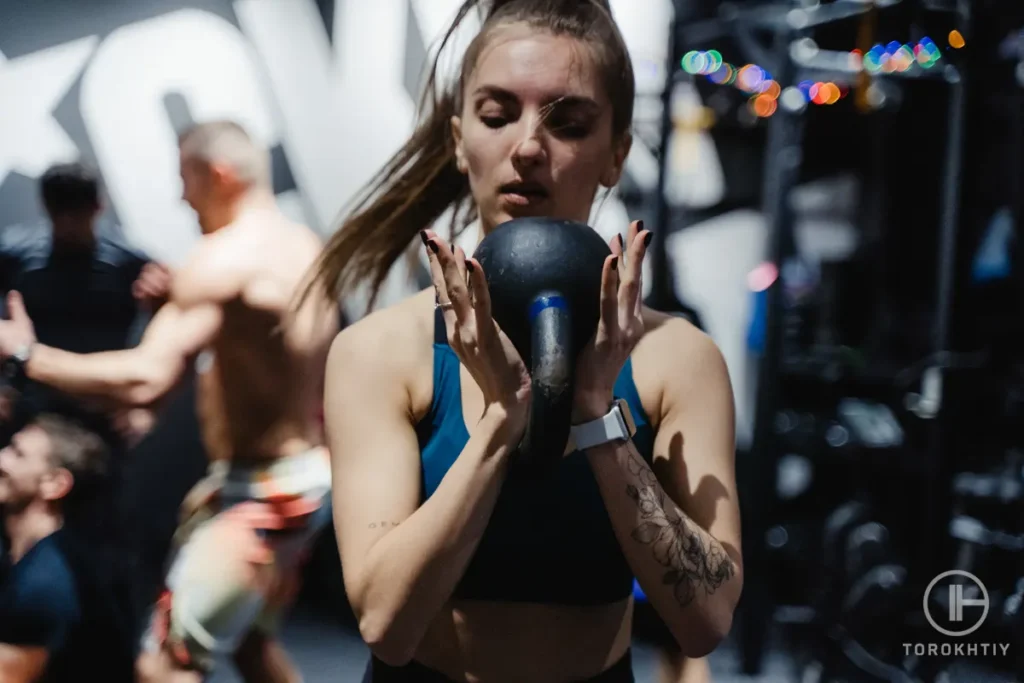
3. Enhances Balance and Stability
When using a kettlebell, it’s not just about its unique design. Kettlebell workouts engage a lot of muscle groups at once (especially arms, legs and core). This contributes to improved balance and stability during workouts because your core is activated to maintain posture and control.
4. Calorie Burn
Exercising, including kettlebells, is known for its calorie-burning properties; the workout can burn up to 400 calories in 20 minutes. The exercises are dynamic and include full-body movements. Although you can’t really target fat reduction in specific areas by just working out, calorie deficit will reduce the amount of fat overall.
5. Builds Lean Muscle Mass
Training with kettlebells promotes building lean muscle mass, including the abdominals. Not only is this going to define your abs, but it’s also going to help make your overall appearance more sculpted.
6. Better Posture
A strong core is vital for good posture. Kettlebell core exercises help correct imbalances and strengthen the muscles that are necessary for an upright, aligned spine.
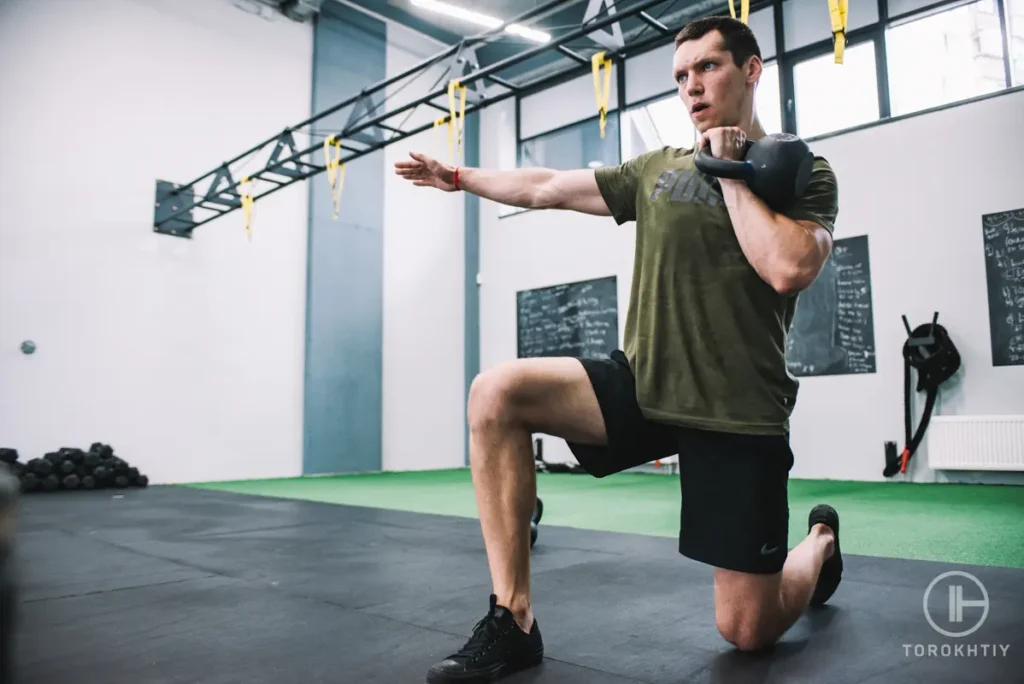
7. Less Risk of Injury
If your core is well-conditioned, then there’s less risk of injury. This is especially important for your lower back. Functional core exercises with a kettlebell will help create a stable foundation, so you’ll have less chance of discomfort or strains.
8 Best Kettlebell Core Exercises
It’s highly likely that you’re excited to start your workout now that you’ve learned so much about the benefits of including a kettlebell in it. There are a lot of fantastic kettlebell exercises for the core you can do, but if you want to get the most out of your exercise and have fast results, keep reading. The following exercises are the ones you want to focus on.
1. Kettlebell Swings
This ab workout with kettlebell will target your entire core – obliques, abs, and lower back.
Stand with your feet shoulder-width apart and hold the kettlebell with both hands between your legs. Bend your knees a little and swing the kettlebell forward and up with your hips while keeping your arms straight. Swing it to chest height, and then swing it back between your legs. Keep in mind, the swing needs to be done in a controlled way, without momentum, for the workout to be effective.
2. Turkish Get-Ups
Another one of great kettlebell ab exercises! This workout will improve your core stability and coordination, and it targets your front and side core muscles.
Lie on your back with the kettlebell in one hand, arm extended toward the ceiling, and the knee on the same side bent. Use your free hand for support, roll onto your elbow, then up onto your hand, all while keeping the kettlebell overhead. Next, lift your hips and sweep your straight leg under your body to find a kneeling position. Then, stand up from the lunge, keeping the kettlebell overhead and reverse the movements to return to the starting position.
3. Windmills
Windmills will target your side core muscles and lower back. They are great for improving the flexibility of your lower back and hips.
Hold the kettlebell in one hand over your head and keep your feet shoulder-width apart. Your arm should be extended. Bend at your hips and lower your free hand toward the opposite foot while keeping the kettlebell arm extended. Then, return to the starting position.
4. Kettlebell Twists
Kettlebell twists will improve your ability to twist and tone your side muscles. This ab workout with kettlebell targets your side and front core muscles.
Sit with your knees bent and feet flat. Hold the kettlebell with both hands in front of your chest, and lean back a bit. Lift your feet off the ground and twist your torso to touch the kettlebell to the ground on one side. When you’re done, repeat on the other side.
5. Plank with kettlebell
This is anything but your ordinary plank; it’s a variation that targets your front and side core muscles and will improve core stability and endurance.
Get into a plank position and keep the kettlebell beside you. Reach across your body with one hand to grab the kettlebell handle and pull it under you. Return the kettlebell to its original position and repeat with the other hand.
6. Dead Bug
Not the nicest name, but the Dead Bug is perfect for strengthening deep core muscles and improving stability.
Lie on your back and hold the kettlebell above your chest with both hands. Then, lift your legs, bent at 90 degrees. Lower one leg and arm without the kettlebell toward the ground while keeping your back on the floor. Return to where you started from and repeat with the other leg and arm holding the kettlebell.
7. Halo
What a difference in the name compared to ‘Dead Bug’, right? The Halo targets your side core muscles and shoulders. It will improve the stability of the core and, at the same time, enhance shoulder mobility.
Hold the kettlebell by the horns in front of your chest and circle it around your head in one direction. Remember to keep your core engaged and your body still. After you’ve done a few reps, reverse the direction.
8. Goblet Squat
What workout routine would be complete without some squats? These are going to target your core, legs, and lower back.
Hold the kettlebell close to your chest with both hands. Squat down while keeping your back straight and core engaged. Push back up to your starting position.
This is a very basic workout, but it’s extremely effective and it’s great for when you don’t have a lot of time to dedicate to specific muscles because it targets a lot of them at the same time.
Kettlebell Core Workout
For them to be effective, kettlebell workouts for abs need to be tailored to your fitness level. You may be tempted to start with something more advanced, but if you’re not ready for it, it won’t do a lot of good and you may end up injured.
Another important thing is to always make your form and safety a priority. Don’t use momentum, and don’t rush through workouts.
Your movements need to be controlled and slow. Your form needs to be on point during the entire workout. Remember that form is more important than the number of reps. As you learn how to maintain it, you’ll be able to do more reps and more challenging workouts.
Here are some workout routines with kettlebells divided into fitness levels.
1. Beginner
If you’re a beginner, one of the best ab exercises with kettlebell to start with are kettlebell swings. Start with a light kettlebell, focus on form, and hip thrusts and rest for 30 seconds in between sets. Do 3 sets of 10 reps.
You can then move on to kettlebell planks – 3 sets of 20 to 30 seconds. Start with shorter durations and make sure to keep a straight line from head to heels.
Finish your workout with kettlebell twists; do 3 sets of 10 reps on each side. Again, you need a light kettlebell, and you should focus on twisting your torso.
| LEVEL | EXERCISE | SETS | REPS/DURATION | REST PERIOD |
| BEGINNER | Kettlebell swings | 3 | 10 reps | 30 seconds |
| BEGINNER | Kettlebell planks | 3 | 20-30 seconds | 30 seconds |
| BEGINNER | Kettlebell twists | 3 | 10 reps (each side) | – |
2. Intermediate
This fitness level needs more of a challenge, so start with Turkish get-ups. Do 3 sets of 5 reps on each side and rest for 45 seconds in between reps. Use a moderate-weight kettlebell and focus on controlled movements. Avoid using momentum.
Then move on to windmills and do 3 sets of 8 reps on each side. Your focus should be on maintaining stability.
Finish with 3 sets of 10 reps of goblet squats. Focus on keeping proper form for squats. Remember to rest for 45 seconds between sets.
| LEVEL | EXERCISE | SETS | REPS/DURATION | REST PERIOD |
| INTERMEDIATE | Turkish get-ups | 3 | 5 reps (each side) | 45 seconds |
| INTERMEDIATE | Kettlebell windmills | 3 | 8 reps (each side) | – |
| INTERMEDIATE | Goblet squats | 3 | 10 reps | 45 seconds |
3. Advanced
The advanced routine contains 4 different workouts. If you’re at an advanced fitness level, then you already know you always need to keep your movements precise and controlled.
Your workout can start with 4 sets of 15 reps of swings. The weight of the kettlebell needs to be challenging and hip thrusts should be explosive. Rest for 30 seconds between sets.
Next, you’re going to do Turkish get-ups; 4 sets of 5 reps on each side. Rest for 45 seconds between sets and keep the movements precise.
Follow this with Russian twists and focus on twisting your torso with a lot of control. Do 4 sets of 15 reps on each side and remember to rest between sets (30 seconds of rest, no more).
End the workout with halo and use a moderate-weight kettlebell for it (the rest of your workouts should include a challenging weight). Do 3 sets of 8 reps and focus on core stability.
| LEVEL | EXERCISE | SETS | REPS/DURATION | REST PERIOD |
| ADVANCED | Kettlebell swings | 4 | 15 reps | 30 seconds |
| ADVANCED | Turkish get-ups | 4 | 5 reps (each side) | 45 seconds |
| ADVANCED | Kettlebell twists | 4 | 15 reps (each side) | 30 seconds |
| ADVANCED | Halo | 3 | 8 reps | – |
Safety Tips and Common Mistakes in Kettlebell Workouts
When it comes to mistakes, you should know everyone makes them. They’re not just reserved for beginners, and you’ll see professionals make quite a bit of them, too. Don’t be afraid of mistakes because they are going to help you learn.
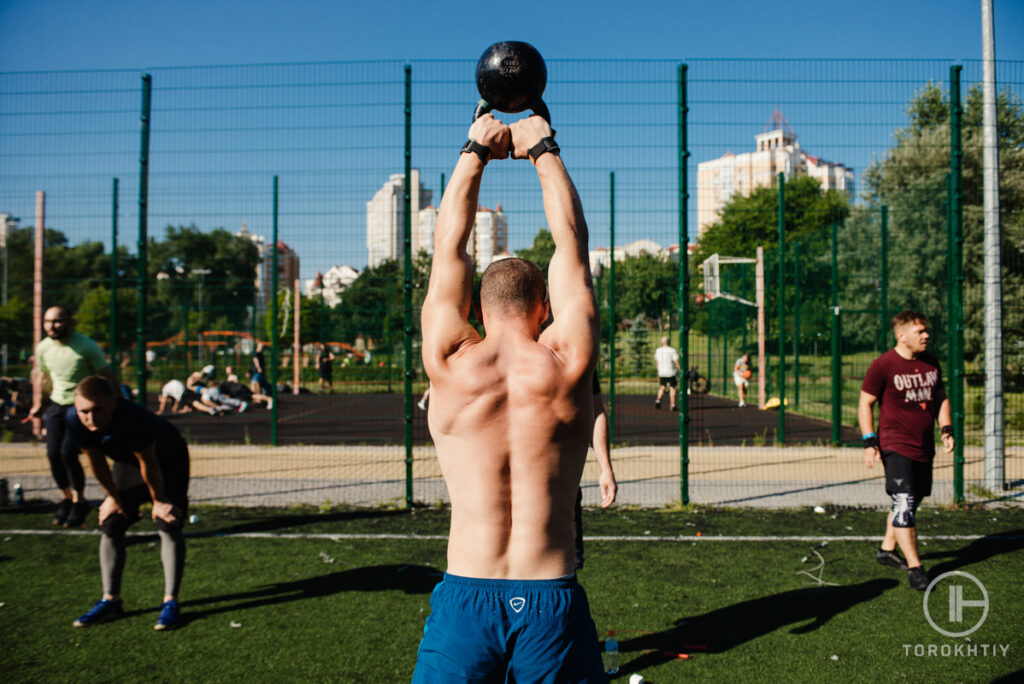
1. Mistake Prevention Awareness
Now, the best kind of mistake is one that you can be aware of and prevent before it happens. The most common mistake concerns form. Kettlebell workouts heavily rely on precision and control, so if your form is off, you can easily strain or injure yourself. That’s why it’s key to learn how to keep proper form before doing challenging workouts and progressing with the weight of the kettlebell.
2. Choose the Correct Weight
And speaking of the weight, that’s another mistake a lot of people make. None of your workouts are going to be effective if you don’t choose the weight correctly. If you start with something that’s too heavy, it will compromise your form and can cause accidents. On the other hand, using a kettlebell that’s too light won’t give you enough challenge to progress and you won’t see any results.
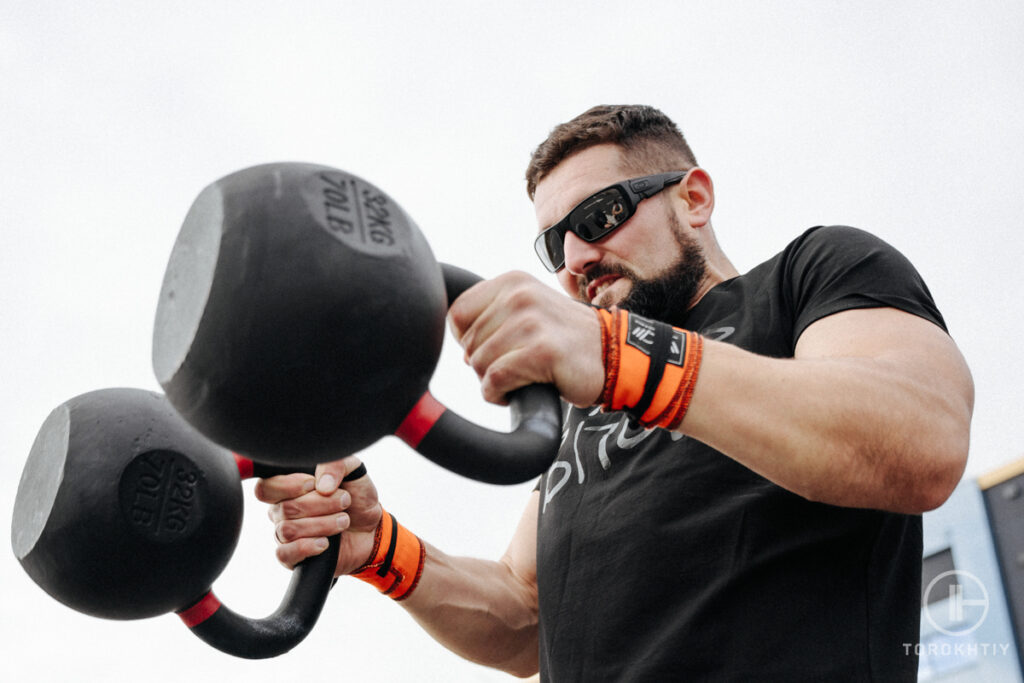
3. Warm-Up/Cool-Down
Another very underestimated aspect of workouts, in general, is warming up and cooling down. You should never start a workout without warming up first. Do some dynamic stretches and light cardio to prepare your muscles and joints. When you’re done with your workout, cool down with static stretches to promote faster recovery and flexibility. Don’t skip the cool-down, it’s just as important as the warm-up.
4. Patience
Lastly, be patient. Don’t rush through the movements – these workouts need concentration, precision, and control.
Choose Right Kettlebell: 5 Tips
There are so many different kettlebells to choose from – iron, cement, plastic, light, heavy, adjustable… It can be overwhelming and more often than not, you can’t be sure if you’ve picked the correct one. But there are some shortcuts you can take to make sure you’ve made the right choice.
1. Kettlebell Type
First, think about the type. There are two primary types – cast iron and competition kettlebells. Cast iron kettlebells have a flat base and vary in handle sizes. They’re very versatile, and most people will be happy with them.
2. Competition Kettlebells
Competition kettlebells are uniform in size and shape and are mostly used in lifting competitions. If you’re a beginner, it’s highly recommended you start with cast iron kettlebells.
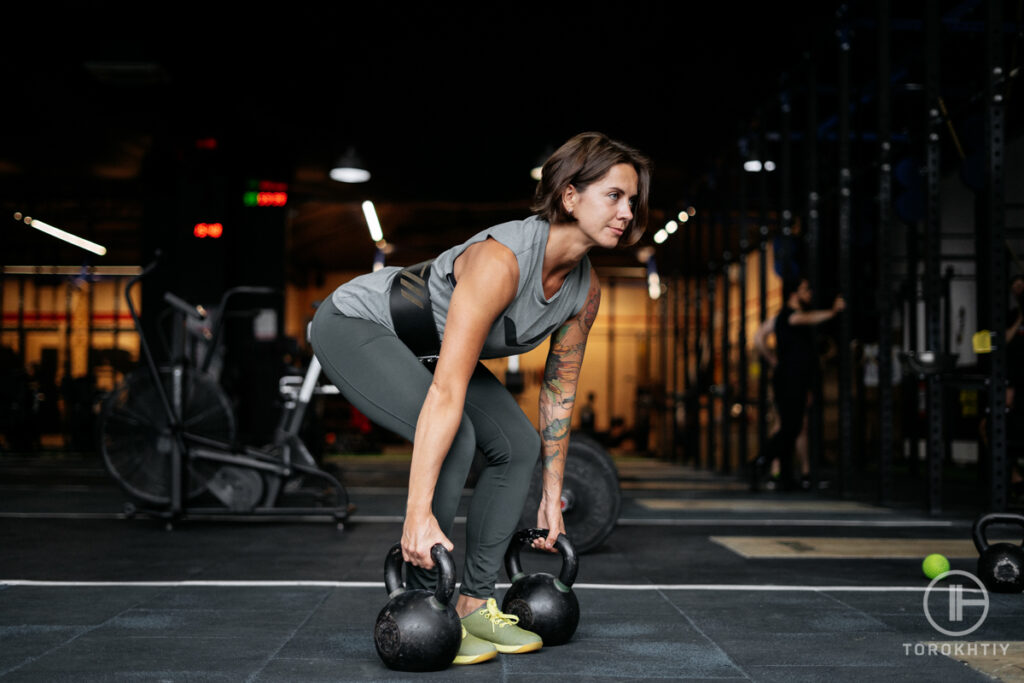
3. Kettlebell Weight
Secondly, you need to choose the correct weight. For beginners, it’s important to start with something lighter that will allow them to learn proper form and control. Women usually start with 18 to 26 pounds, while men start with 26 to 35 pounds. This weight will give you enough challenge to engage your muscles, and it will also allow for enough comfort so you can focus on your form.
4. Adjustable Kettlebells
This is where adjustable kettlebells can be very useful, so if you’re unsure about the weight, consider getting a kettlebell that’s adjustable so you can pick and choose from a few different weight options.
5. Weight Progression
As you progress, of course, you can up the weight little by little, but there should always be a balance between a kettlebell that’s heavy enough to provide resistance, but not so heavy that it compromises your form and safety.
Kettlebells We Recommend
ROGUE KETTLEBELL – E COAT
- Weight range: 9-88 lbs.
- Increments: 9lb / 13lb / 18lb / 26lb / 35lb / 40lb / 44lb / 53lb / 62lb / 70lb / 80lb / 88lb
- Adjustable: No
- Handle diameter: 1.2″ (9lbs.-18lbs.), 1.4″ (26lbs.), 1.5” (35lbs.-88lbs.)
- Material: Cast Iron
- Coating: Black E-Coat, Semi-Gloss
- Color: Black
- Price per pound: ∼ $2.49
- Can be dropped? Yes
These kettlebells are made in collaboration with Cadillac Casting, Inc. and their quality is exceptional. The performance and durability of these cast iron kettlebells is currently the best there is.
They’re made in the USA and have ductile iron construction, which is known for being extremely robust and resistant to corrosion. The E-Coat finish is adapted from the automotive industry and it’s very tough.
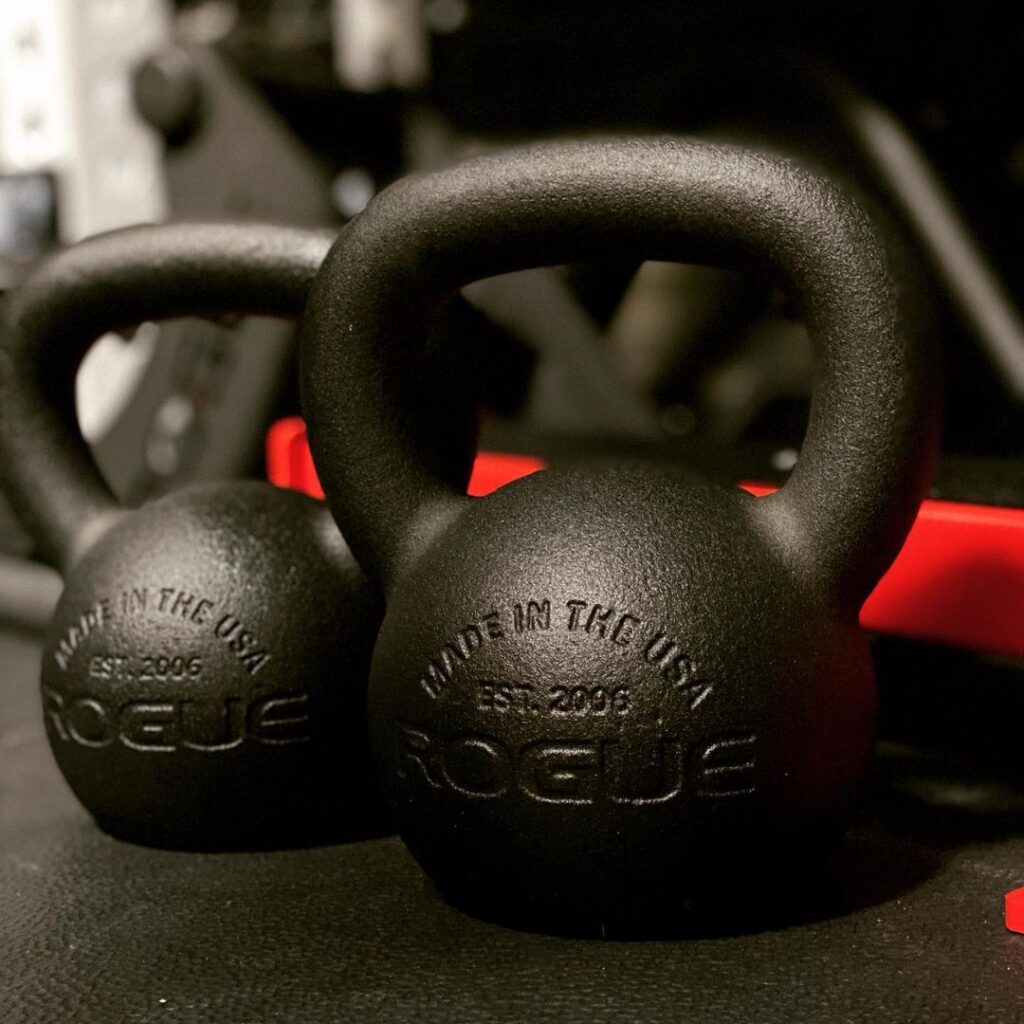
The best thing about them is the wide weight range – it starts at 9 lbs. and goes up to 88 lbs., so it’s suitable for literally anyone and any fitness level. The 40 lbs. kettlebell even meets US Army specifications for the Combat Fitness Test, so that’s how high the quality of these kettlebells is.
If you use them with chalk, however, you may have some slight issues with grip, but overall, you won’t find kettlebells that are better than these.
Positives:
Could be better:
Conclusion
Kettlebell exercises for the stomach are a very dynamic, effective way to improve the strength of your core, but also your fitness in general. They’re versatile, engage a lot of muscle groups depending on what exercises you do and if you hold them with one hand or both. You’ll see some truly amazing results if you keep the correct form in mind and choose the right weight.
What’s your take on this? Have you tried kettlebell core workouts and what were your results? What’s your favorite core exercise with kettlebell and why? How do you incorporate kettlebells into your routine? Do you have any tips on how to use kettlebells for abs?
I’d love to hear from you, so share anything you can think of in the comments!
Also Read:
- Best Core Workout Program
- Ab Workouts for Women
- Core Stability Exercises
- Core Fitness Adjustable Dumbbell
- Bosu Ball Core Workout
- What Muscles Work by Kettlebell Swings
- Leg Exercises With Kettlebell
- Beginner Kettlebell Workout
- Kettlebell Chest Workout
- Best Adjustable Kettlebell
- Benefits of Kettlebell Swings
References:
- Jason Brumitt MSPT, SCS, ATC, CSCS, Hui En Gilpin BS, SPT, Meredith Brunette BS, SPT, Erik P. Meira PT, SCS, CSCS, “INCORPORATING KETTLEBELLS INTO A LOWER EXTREMITY SPORTS REHABILITATION PROGRAM”; National Library of Medicine, https://www.ncbi.nlm.nih.gov/pmc/articles/PMC3096147/ (accessed 8 September, 2023).
- Jodi Helmer, “Kettlebells”; WebMD, https://www.webmd.com/fitness-exercise/a-z/kettlebell-workout (accessed 8 September, 2023).
- Hyoung-Kil Park, Min-Kyung Jung, Eunkyung Park, Chang-Young Lee, Yong-Seok Jee, Denny Eun, Jun-Youl Cha, and Jaehyun Yoo, “The effect of warm-ups with stretching on the isokinetic moments of collegiate men”; National Library of Medicine, https://www.ncbi.nlm.nih.gov/pmc/articles/PMC5833972/ (accessed 8 September, 2023).
- Stacey Carter, “Why it’s important to cool down after exercise, according to the science”; Live Science, http://surl.li/lowrj (accessed 8 September, 2023).
- “Army Combat Fitness Test”; U.S. Army, https://www.army.mil/acft/ (accessed 8 September, 2023).
- Vidar Andersen, Marius Steiro Fimland, Aril Gunnarskog, Georg-Andrè Jungård, “CORE MUSCLE ACTIVATION IN ONE- AND TWO-ARMED KETTLEBELL SWING”; Research Gate, http://surl.li/lowrb (accessed 8 September, 2023).
Why Trust Us?
With over 20 years in Olympic Weightlifting, our team does its best to provide the audience with ultimate support and meet the needs and requirements of advanced athletes and professional lifters, as well as people who strive to open new opportunities and develop their physical capabilities with us.
By trusting the recommendations of our certified experts in coaching, nutrition, dietology, and sports training programming, as well as scientific consultants, and physiotherapists, we provide you with thorough, well-considered, and scientifically proven content. All the information given in the articles concerning workout programming, separate exercises, and athletic performance, in general, is based on verified data. We ensure that you can rely on our professionals’ pieces of advice and recommendations that can be treated as personalized ones which will benefit you and fully meet your needs.
The product testing process is described in more detail here
Author: Ihor Shymechko
Pro Olympic Weightlifter, Coach
Best Results: Snatch – 208 kg,
C&J – 240 kg
Ihor has been a professional weightlifter since 1996, boasting over two decades of competition experience. His notable achievements include clinching the European Championship in 2009 and securing a silver medal in the 105kg division at the Senior World Championships in 2011. Ihor represented his country in the 2008, 2012, and 2016 Summer Olympics. After retiring from competitive weightlifting, he transitioned to coaching, leveraging his vast experience to guide athletes who now compete on both national and international stages.

